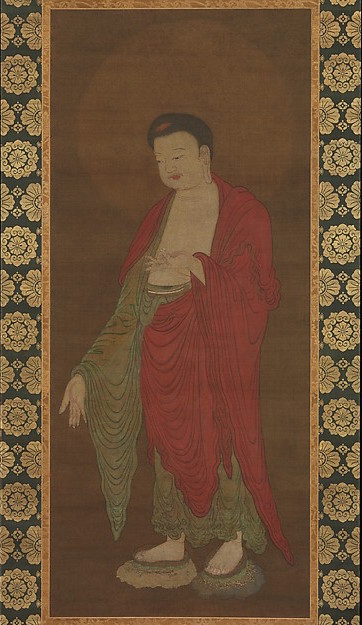
The Life Story of Ani Zamba Chozom: Part Seven – From Korea to the Philippines to Hong Kong
Ani Zamba Chozom was one of the first Westerners to be ordained as a Buddhist nun. Born in England in 1948, a serious illness as

Ani Zamba Chozom was one of the first Westerners to be ordained as a Buddhist nun. Born in England in 1948, a serious illness as

Travelers to Japan notice the impressive gates that mark Shinto shrines, in Japanese, torii, as well as the shimenawa, referring to a type of rope made from

In this three-part series, we explore the Buddhist presence in pop culture media. We first review the second movie in the animated trilogy of Osamu

The Buddhist deity Kshitigarbha, or “He who encompasses the Earth,” has a powerful and ubiquitous presence in Japan, where figures of him depicted as a

In the temple Kozan-ji in Kyoto is a 750-year-old collection of scrolls that is designated a National Treasure. The third scroll, the Illustrated Scroll on the

There is a painting in the Freer Gallery of Art’s current exhibition, Zen, Tea, and Chinese Art in Medieval Japan, that beautifully symbolizes the remarkable cultural

“Return to Amida, Return to Amida, So even dewdrops fall,” wrote the Soto Zen hermit Ryokan (1756–1831) famously, and throughout his life he exhorted those

Visitors to Japan’s shrines and temples cannot miss the hundreds of wooden votive plaques hanging on stands in a reserved area outside on the shrine

Dogen’s (1200–53) Soto Zen is known for its emphasis on shikantaza—“sitting only.” In his popular Once Born Zen – Twice Born Zen: The Soto and Rinzai Schools

Original Author: Osamu Tezuka Director: Kozo Morishita Studio: Toei Animation Distributed by: Warner Bros. Pictures and Toei Animation Release date: 28/05/2011 As far as I

Kenbisan, or Sword Tail Mountain, is a popular hiking spot near Osaka. It is an easy climb not far from the city and may be

Dr. Bill. M. Mak graduated from Peking University and is currently based in the Department of Indological Studies at Kyoto University. My Journey as a